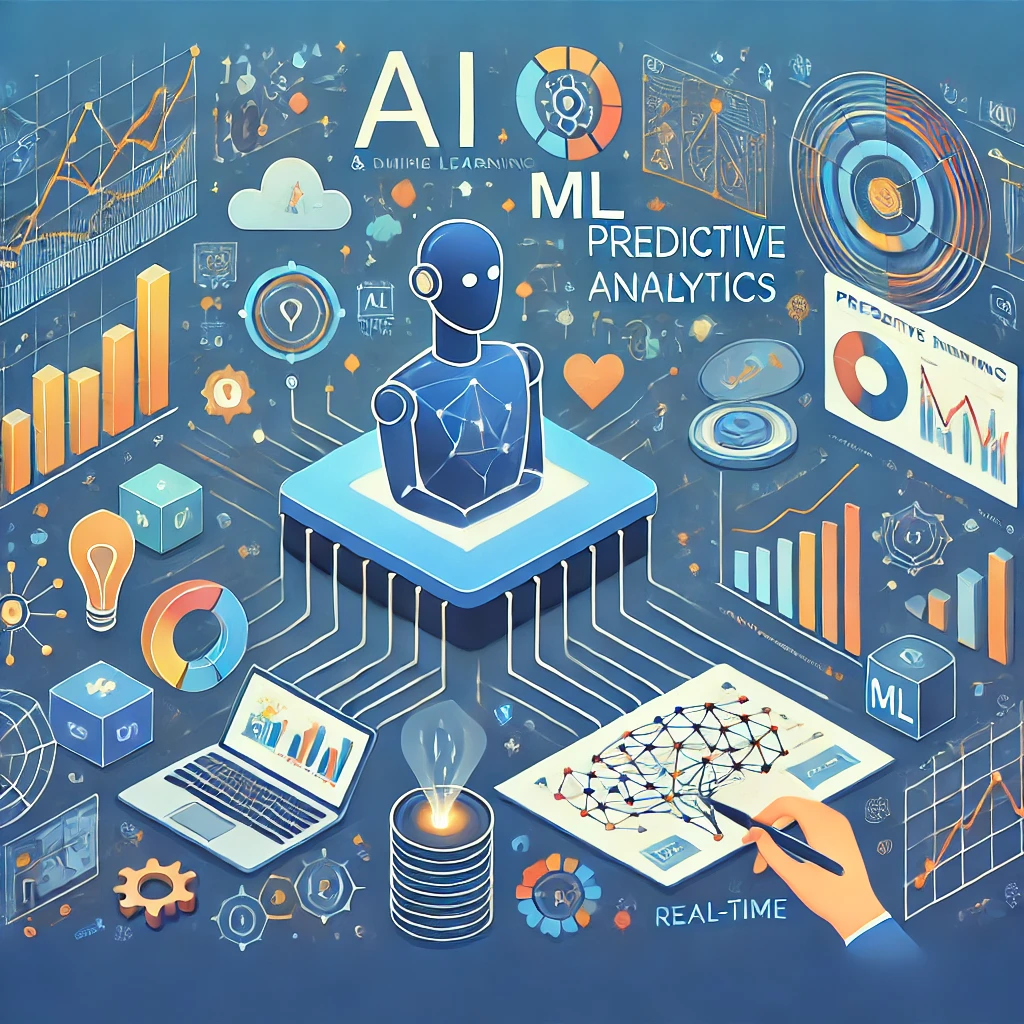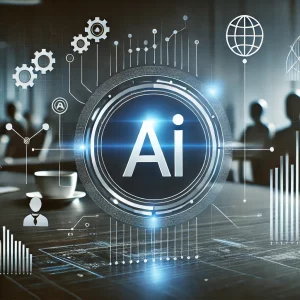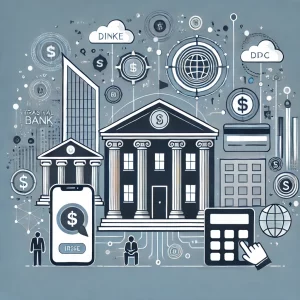How AI and ML Are Enhancing Predictive Analytics

Artificial Intelligence (AI) and Machine Learning (ML) are revolutionizing predictive analytics by enabling businesses and organizations to make data-driven decisions with greater accuracy, speed, and insight. Predictive analytics, which involves using historical data to predict future events, has become a key tool across industries such as healthcare, finance, marketing, and retail. AI and ML technologies have elevated predictive analytics to new heights by automating complex data analysis, detecting patterns, and generating actionable predictions that were previously difficult or impossible to obtain.
In this article, we will explore how AI and ML are enhancing predictive analytics, their key applications, the benefits they offer, and the challenges associated with their use.
The Basics of Predictive Analytics
Predictive analytics is a branch of advanced analytics that uses historical data, statistical algorithms, and machine learning techniques to identify the likelihood of future outcomes based on past events. It helps organizations answer questions like “What is likely to happen next?” and “What actions should be taken to achieve desired outcomes?”
While traditional predictive analytics relied heavily on statistical models and human expertise, the advent of AI and ML has transformed the field. These technologies can analyze massive datasets, learn from them, and make highly accurate predictions with minimal human intervention.
How AI and ML Enhance Predictive Analytics
1. Automating Data Analysis
One of the primary ways AI and ML are enhancing predictive analytics is by automating the data analysis process. In traditional predictive analytics, data scientists had to manually select relevant features (variables) from datasets, clean the data, and build models using statistical techniques. This process was time-consuming and required a high level of expertise.
AI and ML automate much of this process. Machine learning algorithms can automatically analyze large datasets, identify important features, and build predictive models without requiring manual intervention. This reduces the time and effort needed to perform data analysis and makes predictive analytics more accessible to a wider range of users.
For example, in retail, machine learning models can analyze customer behavior data to predict which products are likely to be purchased in the future. These models can consider factors such as purchase history, browsing behavior, and demographics, all without human intervention.
2. Improved Accuracy through Continuous Learning
Machine learning models continuously learn and improve over time. Unlike traditional predictive models, which are static and need to be manually updated, ML models automatically adjust their predictions as new data becomes available. This continuous learning process enables AI-driven predictive analytics to provide more accurate and up-to-date predictions.
For instance, in finance, AI and ML can be used to predict stock prices or market trends. As new data flows in, machine learning models can adjust their predictions based on real-time market conditions, ensuring that investors receive accurate and relevant information.
Similarly, in healthcare, AI-powered predictive analytics can analyze patient data and adjust risk predictions for diseases or conditions as new information is collected. This dynamic learning process helps healthcare providers make better decisions and provide more personalized care to patients.
3. Handling Large and Complex Datasets
AI and ML excel at handling large and complex datasets that are often too challenging for traditional methods. Predictive analytics typically involves working with vast amounts of data from various sources, such as customer transactions, social media activity, website analytics, and sensor data.
Machine learning algorithms can process these massive datasets efficiently and uncover patterns and relationships that would be difficult for humans to identify. For example, in marketing, ML models can analyze data from multiple channels (such as email, social media, and online advertising) to predict customer behavior and optimize marketing strategies.
AI and ML can also handle unstructured data, such as text, images, and videos, which traditional predictive models struggle to process. Natural language processing (NLP) techniques, for example, enable AI systems to analyze customer feedback, reviews, and social media posts to predict customer sentiment and behavior.
4. Enhancing Personalization
Personalization is one of the key areas where AI and ML are making a significant impact on predictive analytics. Businesses are increasingly using predictive analytics to deliver personalized experiences to customers based on their preferences, behaviors, and needs.
For instance, e-commerce platforms use AI-driven predictive models to recommend products to customers based on their browsing history, purchase patterns, and demographic information. Streaming services like Netflix and Spotify use machine learning algorithms to analyze user preferences and recommend personalized content such as movies, shows, or music.
In healthcare, predictive analytics powered by AI and ML can help personalize treatment plans for patients. By analyzing patient data such as genetics, medical history, and lifestyle factors, AI can predict which treatments are most likely to be effective for a specific individual, leading to more personalized and effective healthcare solutions.
5. Real-Time Predictive Analytics
Traditional predictive analytics often relied on historical data and produced predictions that were updated periodically. However, in today’s fast-paced world, real-time insights are becoming increasingly important. AI and ML have enabled the development of real-time predictive analytics, allowing businesses to make decisions based on the most current data available.
For example, in supply chain management, AI-powered predictive analytics can analyze real-time data from sensors, GPS devices, and weather forecasts to predict potential disruptions, such as delays in shipments or equipment failures. This allows companies to take proactive measures to mitigate risks and optimize their supply chain operations.
In financial services, AI-driven predictive models can analyze real-time market data to predict fluctuations in stock prices or currency values, enabling traders to make informed decisions quickly.
Key Applications of AI and ML in Predictive Analytics
AI and ML are being applied to predictive analytics across various industries, offering a wide range of benefits. Here are some key applications:
1. Healthcare
In healthcare, AI-driven predictive analytics is being used to predict patient outcomes, improve diagnoses, and personalize treatment plans. Machine learning models can analyze patient data to predict the likelihood of developing certain conditions, such as heart disease or diabetes, enabling early intervention and preventive care.
Predictive analytics is also used to predict hospital readmissions, optimize treatment plans, and improve resource allocation, ultimately leading to better patient outcomes and reduced healthcare costs.
2. Finance
In the financial industry, AI and ML are used to enhance predictive analytics for fraud detection, credit risk assessment, and investment forecasting. Machine learning models can analyze transaction data to detect patterns of fraudulent behavior and predict potential security breaches.
Additionally, AI-driven predictive analytics can assess a borrower’s creditworthiness by analyzing data from various sources, including financial history, social media activity, and spending patterns. This enables more accurate risk assessments and lending decisions.
3. Retail and E-Commerce
AI-powered predictive analytics is transforming the retail and e-commerce sectors by improving demand forecasting, inventory management, and customer engagement. Retailers can use machine learning models to predict future demand for products, optimize pricing strategies, and personalize marketing campaigns.
For example, AI can analyze customer purchase history and browsing behavior to predict which products a customer is likely to buy next. This enables retailers to deliver personalized recommendations and promotions, improving customer satisfaction and driving sales.
4. Manufacturing
In manufacturing, AI-driven predictive analytics is used to optimize production processes, reduce downtime, and improve equipment maintenance. Machine learning models can predict equipment failures by analyzing sensor data and historical maintenance records, allowing manufacturers to schedule preventive maintenance and reduce costly downtime.
Predictive analytics can also be used to optimize inventory levels, forecast demand for raw materials, and improve overall production efficiency.
5. Marketing and Customer Experience
In marketing, AI and ML are used to predict customer behavior, optimize advertising campaigns, and improve customer engagement. Machine learning models can analyze data from various marketing channels to predict which customers are most likely to respond to specific campaigns or offers.
AI-powered predictive analytics can also help businesses deliver personalized experiences to customers by predicting their preferences and behaviors. This improves customer satisfaction, loyalty, and retention.
Benefits of AI and ML in Predictive Analytics
The integration of AI and ML into predictive analytics offers several benefits, including:
1. Increased Accuracy
Machine learning models continuously learn from new data, enabling them to improve the accuracy of their predictions over time. This results in more reliable forecasts and better decision-making.
2. Automation
AI and ML automate the data analysis process, reducing the need for manual intervention and allowing organizations to analyze large datasets more efficiently. This saves time and resources while improving the speed of insights.
3. Personalization
AI-driven predictive analytics enables businesses to deliver personalized experiences to customers, improving engagement and satisfaction. Personalized recommendations, targeted marketing, and individualized treatment plans are just a few examples of how AI enhances personalization.
4. Real-Time Insights
AI-powered predictive analytics enables real-time insights, allowing businesses to make data-driven decisions quickly. This is particularly valuable in industries such as finance, supply chain management, and marketing, where real-time data is critical for success.
Challenges of Implementing AI and ML in Predictive Analytics
While AI and ML offer significant benefits for predictive analytics, there are also challenges to consider:
1. Data Quality
AI and ML models require large amounts of high-quality data to make accurate predictions. Poor-quality or incomplete data can lead to inaccurate forecasts and unreliable insights.
2. Complexity
Implementing AI-driven predictive analytics requires expertise in machine learning, data science, and data engineering. Organizations may need to invest in skilled personnel and advanced technologies to fully realize the benefits of AI and ML.
3. Ethical Concerns
AI-driven predictive analytics can raise ethical concerns, particularly when it comes to data privacy and bias. Organizations must ensure that their AI models are transparent, fair, and comply with data protection regulations.
Conclusion
AI and ML are transforming predictive analytics by automating data analysis, improving accuracy, and enabling real-time insights. Across industries such as healthcare, finance, retail, and manufacturing, AI-driven predictive models are helping organizations make more informed decisions, optimize processes, and deliver personalized experiences to customers. While challenges





